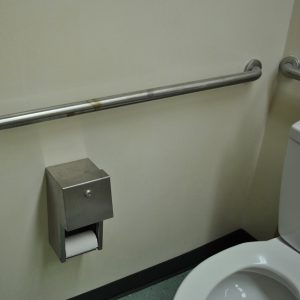As we get older, our risk of falling increases. In fact, falling once doubles the chances of falling again. According to the Centers for Disease Control and Prevention (CDC), one out of five falls causes serious injury such as broken bones or head injury. Over 300,000 people aged 65 or older are hospitalized each year for hip fractures caused by falls.
Most fall injuries occur in the home. We think of our homes as our safe space and sanctuary, often overlooking potential dangers. Here are six common hazards that occur in the home that can contribute to an increased risk of falling.
Clutter. Items that block or limit walkways in the home can be tripping hazards. Having to navigate around excess furniture or boxes can be difficult for someone with limited mobility. Clear out the clutter and keep walkways free of extraneous items. Wide open hallways and other spaces in the home will reduce potential tripping hazards.Most fall injuries occur in the home. We think of our homes as our safe space and sanctuary, often overlooking potential dangers. Here are six common hazards that occur in the home that can contribute to an increased risk of falling.
Rugs. Rugs large and small can be tripping hazards. People can catch their toes underneath a rug’s edge or the rug itself can slip out from under them, causing a fall. Remove any rugs that are not necessary, such as rugs set out strictly for decoration. Apply slip-resistant backing to rugs to keep them from sliding across the floor.
Lighting. Dim lighting can make it difficult to see potential tripping hazards. Install brighter lights, especially in walkways and stairwells. Use nightlights in hallways and bathrooms to help navigate more easily at night.
Storage. Many falls occur when people are trying to reach items that are stored out-of-reach. Rearrange items, especially those used most often, in cabinets and on shelves so they can be reached easily without needing a step ladder.

Handrails. The lack of handrails or handrails that are broken or installed incorrectly can contribute to falls. The extra support and stability provided by handrails is vital, especially for those with limited mobility. Installing proper handrails in the bathroom (including the toilet and shower) and on stairs can greatly reduce the risk of falling.
Pets. Small pets can contribute to falls by inadvertently acting as a tripping hazard. Be aware of where pets are and tread carefully around them. When walking a pet, keep them on a tight leash and do not let them wrap around feet or legs.
Another great way to help reduce the risk of falling is through exercise. Strength and balance exercises such as Tai Chi help improve leg strength, balance, and flexibility. Some people also may benefit from calcium and vitamin D supplements, which can improve bone strength. Always consult a physician before taking any supplement.
Related articles:
Important Facts about Falls (CDC)
Fall Prevention (UF/IFAS Extension)
Extension classes are open to everyone regardless of race, creed, color, religion, age, disability, sex, sexual orientation, marital status, national origin, political opinions or affiliations.
 0
0
